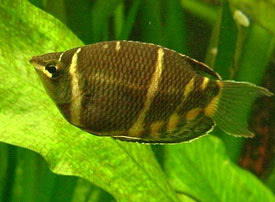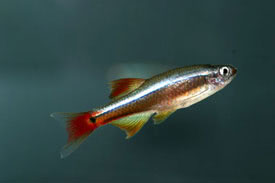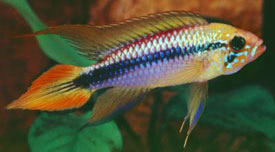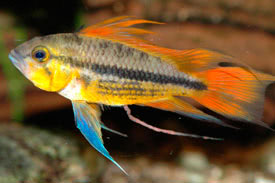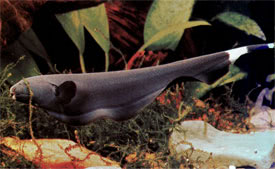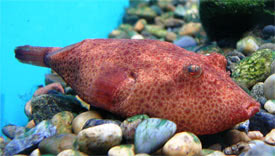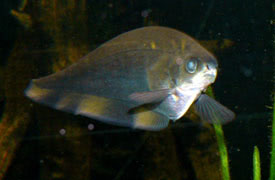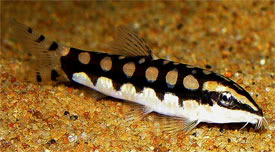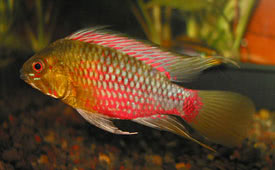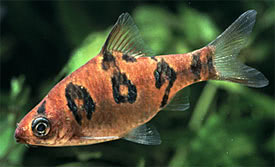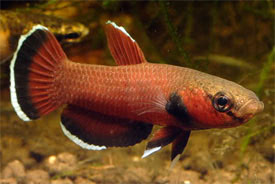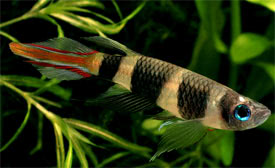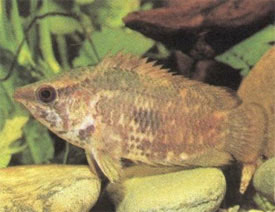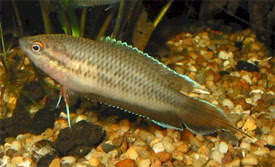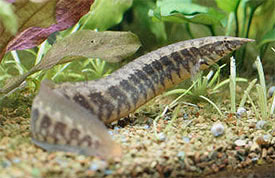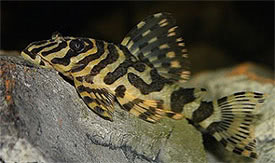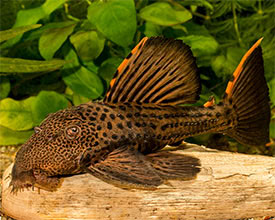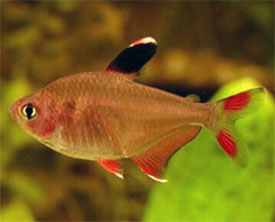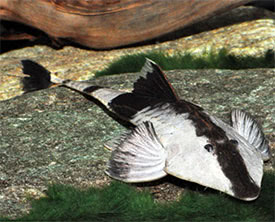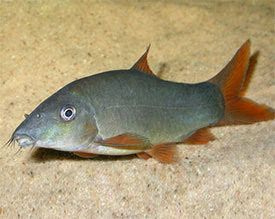
 Magyarul / Hungarian
Magyarul / Hungarian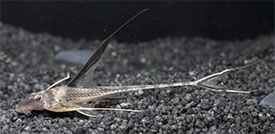
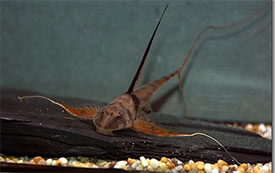
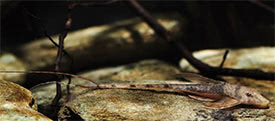

- Scientific name: Lamontichthys filamentosus
- Synonyms: Harttia filamentosa, Harttia filamentissima
- Common name: Sturgeon Catfish, Kite Pleco
- Group: Catfishes
- Habitat: South America; Brazil, Peru, Ecuador and Bolivia in the western Amazon basin.
- Size: 16 cm
- Biotope: Inhabits fast-flowing rivers with boulders and large stone substate.
- Social behavior: A peaceful catfish and reasonably well mannered with conspecifics. Can be kept with other small, peaceful fishes.
- Diet: Omnivorous; their natural diet are benthic algae and micro-organisms which are rasped from solid surfaces. They will also accept dried foods in aquarium.
- Breeding: It is rare in aquarium.
- Tank: Minimum 200 litres
- Population: 4-5 fishes for 200 litres
- Decoration: They need high water-flow and lots of oxigen. The substrate can be small gravel or sand with some water-worn rocks and pebbles. Place some driftwood and roots in their aquarium.
- Temperature: 24-27 °C
- pH: 5.5-7.5
- Hardness: 2-15 NK°
- Lifespan: 8-10 years
Description: Sturgeon Catfish have extended first rays on their dorsal, pectoral and caudal fins which forming long filaments, that give the fish extremely elegant look. These filaments may help the fish with orientation in the murky waters. Kite Pleco is relatively common in the aquarium hobby, but is not easy to keep and recommended only for experienced aquarists. This species often fades away after a few months of captivity and this is down to feeding habits. It requires fast, oxygenated water and will only eat algae and tiny microorganisms from flat surfaces, which is very hard to replicate in the aquarium. Success lies in weaning this fish onto prepared foods and this can be achieved by experimenting with water flow and tank decoration to create areas of strong current and quieter feeding areas. The other possibility to keep strips of slate and flat stones in a separate aquarium outdoors to cultivate algae on them, and place these stones into their tank after a few days.
There are only a few reports of their aquarium breeding. The breeding tank was 280 litres filtered at 4000l/h, where the current of the pump was directed to the back of the tank. The fish secretively spawned among the stones and wood. Spawning might be stimulated with some larger water changes. The female laid 45-50 eggs that ranged in size from 3.7 to 3.9mm. The eggs hatched after 8 days producing 12mm long fry.





